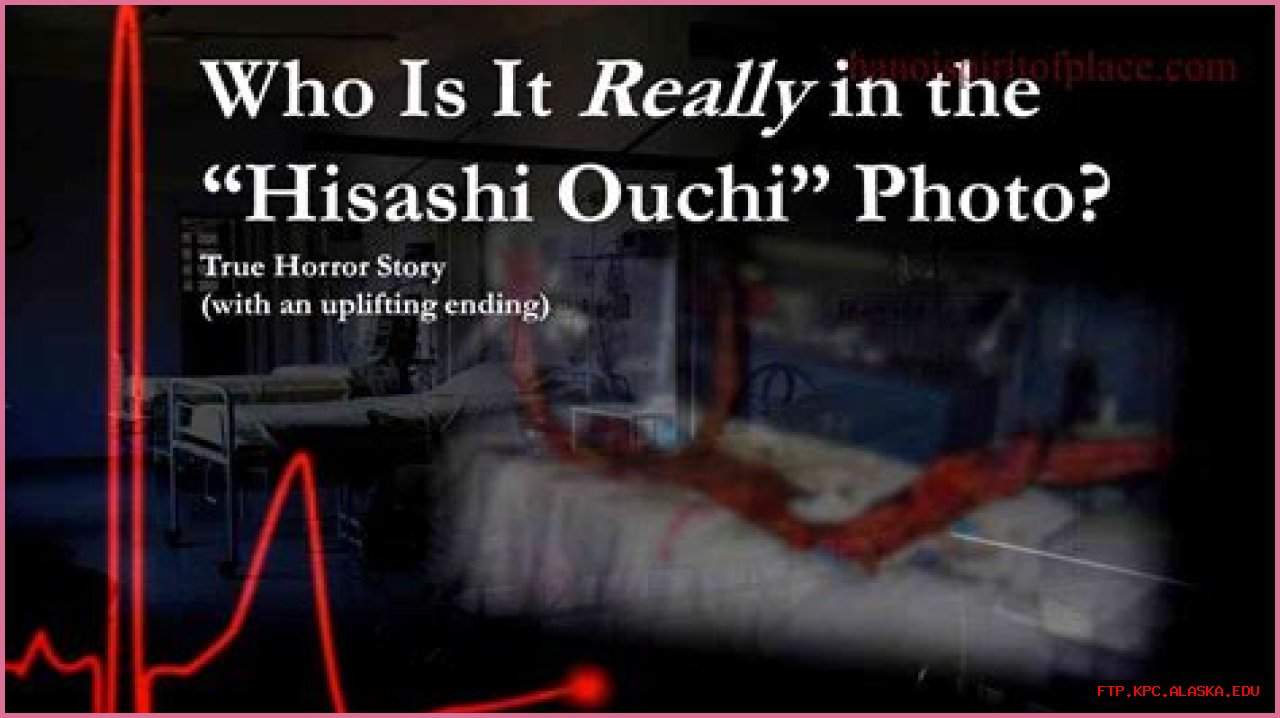Hisashi Ouchi, a name that resonates with sorrow and tragedy, captured public attention not only through his unfortunate fate but also through the haunting photos that document his last days. These images serve as a chilling reminder of the catastrophic accident that forever altered his life and the lives of those around him. As we delve into the details surrounding his life, it is essential to understand the circumstances that led to the infamous photos that circulate on the internet.
On September 30, 1999, Hisashi Ouchi was one of the workers involved in a catastrophic nuclear accident at the Tokaimura uranium processing facility in Japan. The event left him battling for his life and ignited a nationwide conversation about safety protocols in nuclear facilities. The images of Ouchi, both before and after the accident, highlight the stark contrast between his life as a dedicated worker and the harrowing aftermath of a disaster that many believe could have been prevented.
In this article, we will explore the life of Hisashi Ouchi, the events leading to the accident, and the impact his story has had on nuclear safety regulations. Through this exploration, we aim to provide a comprehensive understanding of how a single incident can turn a life into a cautionary tale, forever etched in both memory and photography. Join us as we take a closer look at Hisashi Ouchi's biography, the significance of the photos taken during his ordeal, and the lessons learned from this tragic event.
Who Was Hisashi Ouchi?
Hisashi Ouchi was a Japanese nuclear plant worker born in 1965. He dedicated his life to working in the nuclear industry, believing in the potential of nuclear energy to power the future. His enthusiasm and commitment to his work were evident, but the tragic accident that befell him would overshadow his contributions to the field.
👉 For more insights, check out this resource.
What Happened During the Tokaimura Accident?
The Tokaimura nuclear accident occurred when workers at the facility improperly mixed uranium fuel, leading to a criticality accident. This resulted in a massive release of radiation, affecting Ouchi and two other workers. Ouchi was exposed to lethal doses of radiation, which would lead to his suffering and ultimately his death.
How Did Hisashi Ouchi's Injury Affect His Life?
Following the accident, Hisashi Ouchi endured extensive medical treatment, including multiple organ failures and severe radiation burns. His condition was dire, leading to a lengthy and painful battle for survival. The photos taken during his hospital stay shocked the public and raised awareness about the dangers of inadequate safety measures in nuclear facilities.
👉 Discover more in this in-depth guide.
What Do the Photos of Hisashi Ouchi Represent?
The photos of Hisashi Ouchi serve as a stark reminder of the human cost of industrial accidents. These images not only depict the physical toll of radiation exposure but also symbolize the failures of safety protocols that led to such tragedies. They evoke a deep sense of empathy and challenge us to reflect on the importance of safety in the workplace.
What Can We Learn from Hisashi Ouchi's Story?
Ouchi's tragic story is a powerful reminder of the need for rigorous safety measures in the nuclear industry. Following the Tokaimura accident, Japan implemented stricter regulations and oversight to prevent similar incidents from occurring in the future. Hisashi Ouchi's experience has become a crucial part of the conversation surrounding nuclear safety, emphasizing the need for ongoing vigilance and reform.
How Did Hisashi Ouchi's Legacy Impact Nuclear Safety Regulations?
The legacy of Hisashi Ouchi extends beyond his personal tragedy; it has significantly impacted nuclear safety regulations in Japan and worldwide. The incident led to increased scrutiny of nuclear facilities and a reevaluation of safety practices. The lessons learned from Ouchi's story continue to inform policies aimed at protecting workers and the public from the dangers associated with nuclear energy.
What Happened After Hisashi Ouchi's Death?
Hisashi Ouchi passed away on December 21, 1999, after enduring painful treatments for over three months. His death marked a pivotal moment in Japan's nuclear safety history, prompting discussions about the industry's ethical responsibilities and the importance of prioritizing worker safety. The aftermath of his passing saw a renewed commitment to improving safety standards in nuclear facilities.
Why Are Photos of Hisashi Ouchi Still Relevant Today?
The photos of Hisashi Ouchi remain relevant today as they encapsulate the human cost of industrial negligence. They serve as a visual representation of the consequences of safety failures and stimulate ongoing discussions about nuclear energy's future. As society continues to grapple with energy needs and safety concerns, Ouchi's story reminds us that behind every statistic lies a human life.
In Conclusion: Remembering Hisashi Ouchi
Hisashi Ouchi's life and death are tragic chapters in the history of nuclear energy. The photos that document his suffering are not merely images; they are powerful symbols of the human experience in the face of disaster. As we reflect on his story, we must remain vigilant about safety and ethical practices in all industries, ensuring that such tragedies are never repeated.
In understanding the significance of "hisashi ouchi photo," we honor his memory and advocate for a safer future for all workers in hazardous industries.
Unveiling The Mystery: Who Is Dermott Brereton’s Partner?Unveiling The Mystery: Does Channing Tatum Have A Twin Brother?Unveiling The Life Of Jonathan Stoddard's Wife
Hisashi Ouchi Single Album by Acacia Komodo Apple Music
Hisashi Ouchi, The Radioactive Man Kept Alive For 83 Days. (1999) r
hisashi ouchi photos
